Much of the Norwegian Polar Institute's research takes place from ships in the sea ice where the polar bear lives and hunts. This has to occur in a way that protects both polar bears and people.
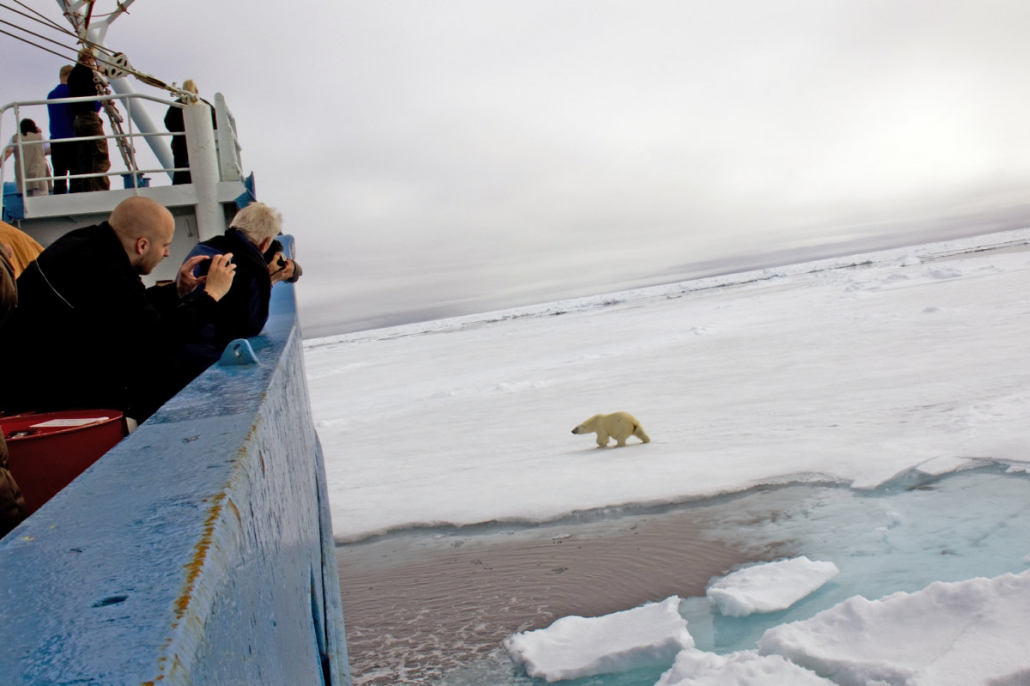
Everyone on deck, cameras at the ready, as the polar bear approaches the ship. Photo: Ann Kristin Balto/Norwegian Polar Institute
Polar bears are not stressed by a vessel lying at rest. They are curious and keen to come over and investigate. This is usually a safe way to meet polar bears. But as soon as we set foot on the ice, the situation changes. When researching sea ice, groups of scientists and personnel are put down on the ice to collect data on ice thickness, ice algae, plastic in the ice, melt ponds, the albedo effect, etc. In that case, they need to be protected in various ways. If there are many different groups spread out across the ice, one person on the ship’s bridge is responsible for all the groups. Each group on the ice has its own polar bear guard who has taken a polar bear course. The guard on the ice always carries a flare gun with flashbangs, as well as a powerful rifle, binoculars and VHF.
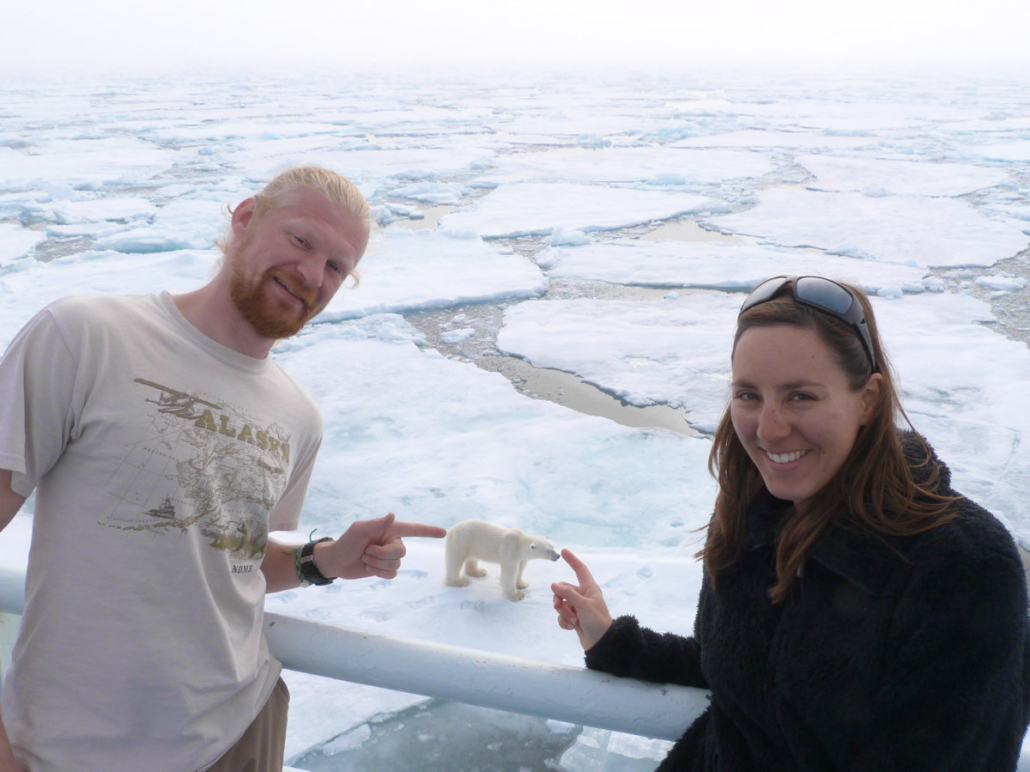
A safe encounter with a polar bear on the deck of RV Lance. Photo: Mar Fernández-Méndez/Norwegian Polar Institute
Training = safety
Everyone on the ice must be able to handle a weapon if a situation arises. Before each field season, employees are invited to participate in a field course, which includes communication, first aid, small boat handling, navigation, securing of camps and shooting practice, along with an introduction to polar bear behaviour. Those who do not take the course in Tromsø can undertake shooting practice in Longyearbyen when they arrive. Shooting needs to be practised annually.
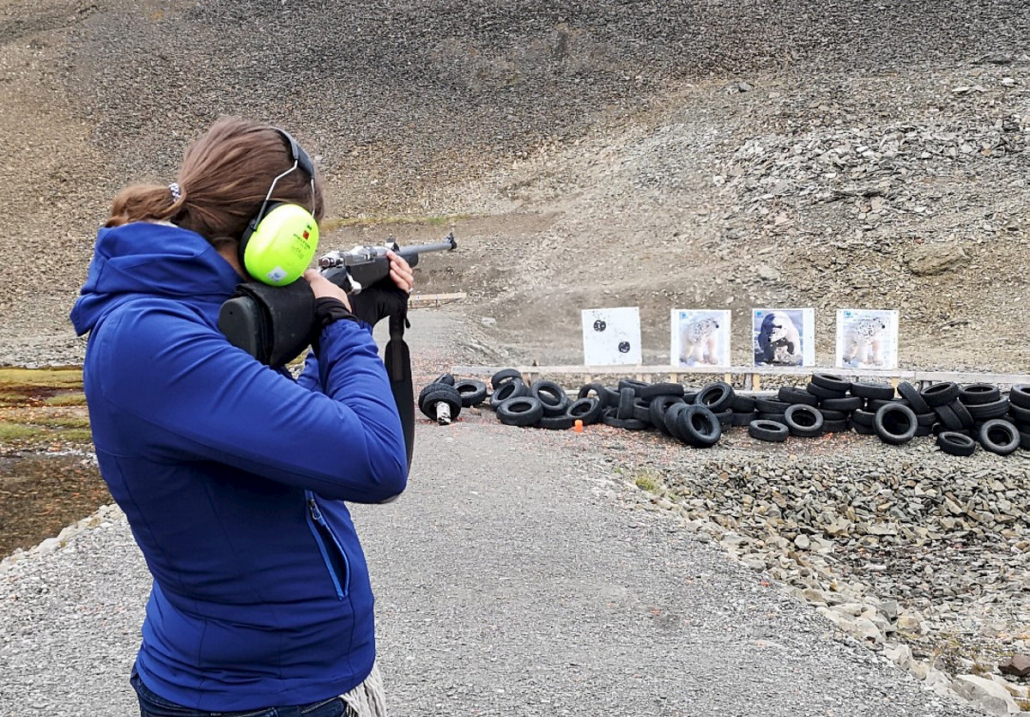
Shooting practice prior to a trip. Photo: Ann Kristin Balto/Norwegian Polar Institue
The Norwegian Polar Institute takes the carrying of weapons seriously. Loaded weapons are never kept on board a boat or helicopter. Weapons are stored in gun cabinets and good routines have been established to ensure against accidental discharge.
Polar bear guard
A place is chosen on the ice where the scientists will perform their tasks – an ice station (it may be a large ice floe or an area on the fast ice). The ice station should be clear with no ridges, and weather and visibility are of crucial importance. The first and last person in a group on the sea ice must be armed. The thickness of the ice is checked, and must be at least 10 cm thick to be walked on, and at least 30 cm thick for snowmobiles or similar heavy equipment. The ice may be mobile and it must be constantly monitored.
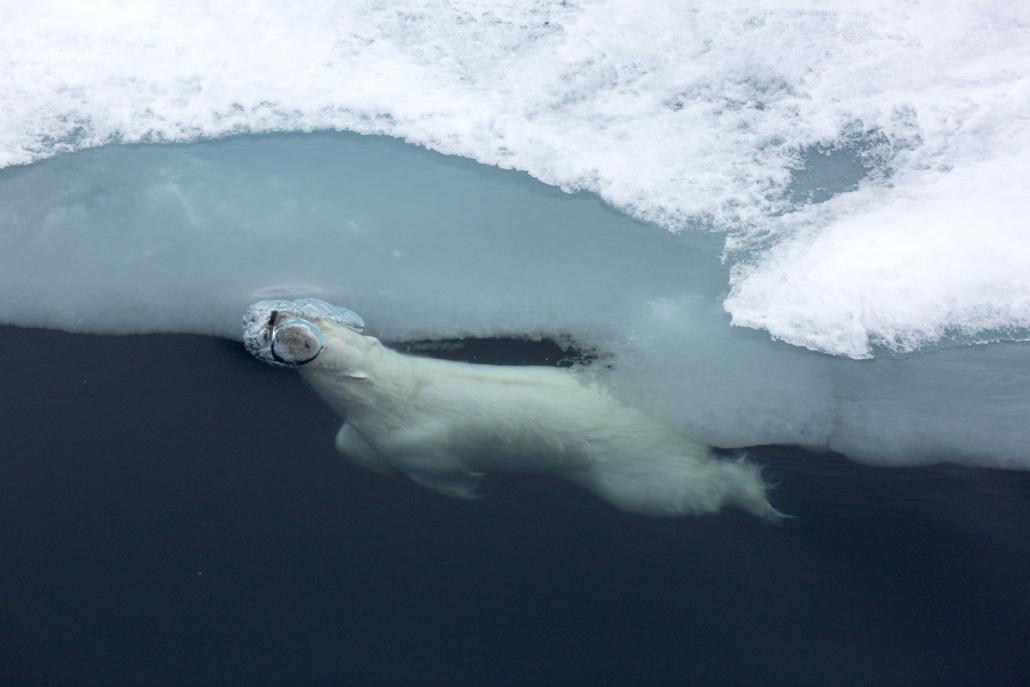
It can be difficult to detect polar bears that are swimming and diving. Photo: Jon Aars/Norwegian Polar Institute
If there are ridges on the ice, the polar bear guard should stand on the top of them and scout. It is important not to freeze, because if the guard has to keep moving to stay warm, this can affect their scouting ability. It is not easy to detect a white bear in the snowy landscape, but experienced eyes will quickly see a polar bear from the yellow tinge of its fur. In ice with many ridges and leads (open water), it can be difficult to detect swimming or diving polar bears at long range.
There are many assessments to be made when a polar bear shows up, and weapon holders must decide when the bear should be scared off, how close the bear is allowed to come, and for how long it should be scared off. The Norwegian Polar Institute’s first polar bear researcher, Thor Larsen, was surprised by a polar bear standing suddenly at close quarters and, with only a revolver available, he let it approach before taking action. It got close enough that they were looking each other in the eye, but the bear did not seem aggressive so, instead of shooting, he hit it hard in the muzzle with the revolver and roared at the bear, which quickly ran off. Shouting and making a noise is effective, and our safety experts say that the flare gun saves bears, while the rifle saves people.
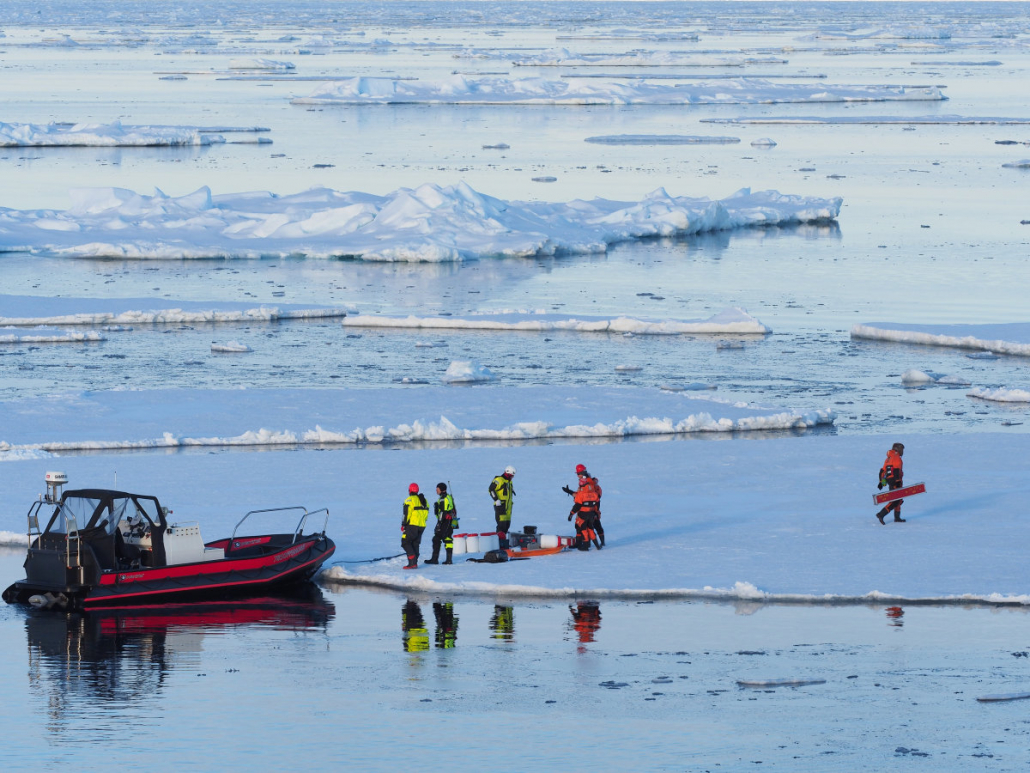
Establishing an ice station in the Fram Strait. Photo: Ann Kristin Balto/ Norwegian Polar Institute
Evacuation
If the bear is discovered early, i.e. far away, everyone on the ice is evacuated. There is usually time to get both people and equipment back on board the ship. The polar bear guards are trained to anticipate situations, and do everything possible to avoid coming face-to-face with the bear. If a helicopter is available, it may be used to sweep over the area where the scientists and personnel are headed, to check that it is free from bears.
Usually, in the event of an evacuation, equipment is taken on board but, if the ice is very mobile, expensive gear may be lost, or the polar bear may come and investigate it more closely. They love rubber, and can eat the seat of an abandoned snowmobile or destroy a left-behind fender. On one occasion, black rubbish bags were set out to mark an aircraft landing strip. To the polar bear that arrived, these must have resembled seals, but, after tearing many of them apart, it left disappointed, and the cruise party had to clean up on the ice.
Royal accommodation on the ice
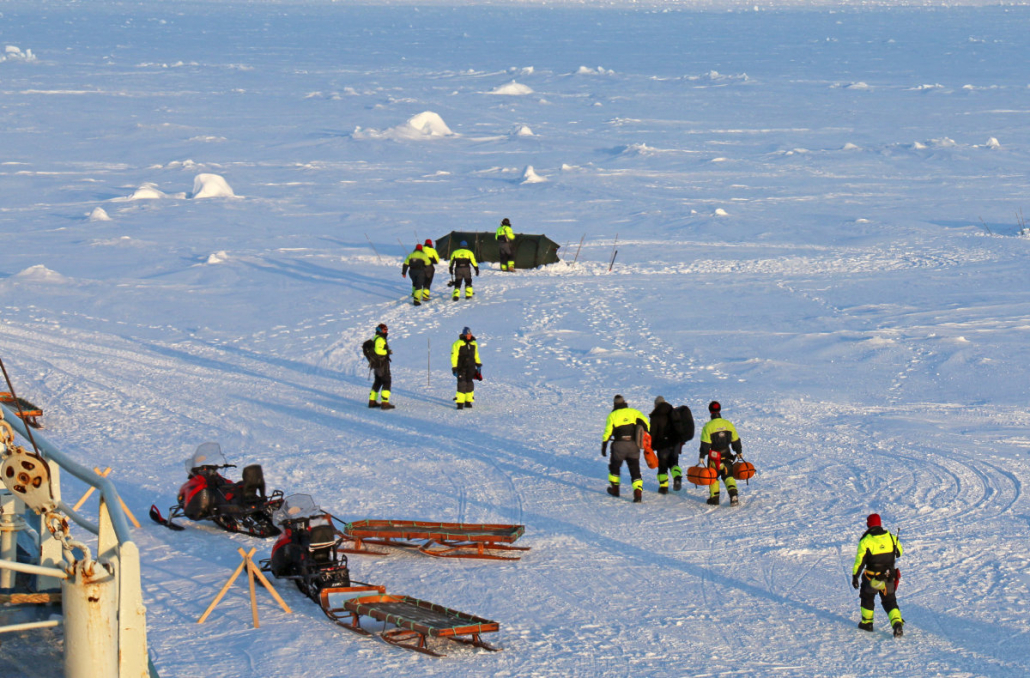
Norway’s Crown Prince Haakon Magnus and Crown Princess Mette-Marit on their way to the tent they will be sleeping in. Photo: Mats Granskog/ Norwegian Polar Institute
In 2015, the royal couple visited RV Lance, which was frozen into the ice north of Svalbard. They came by helicopter to learn more about climate research and the work of the scientists. The highlight of the trip was an overnight stay in a tent on the sea ice, which required the presence of polar bear guards. There was a lot of movement and packing in the ice, which made it difficult to monitor. Pairs of guards took two-hour shifts to check that no bears were approaching. One means of locating polar bears is to use a heat-seeking camera. But the polar bear is well-insulated and emits little heat, so it is mainly the muzzle, eyes and paws that the camera will pick up.
The bear always comes first
As guests in the realm of the polar bear, our duty is to always ensure that the bear is safe. The Norwegian Polar Institute does not take chances on the polar bear’s behalf. Good training and safety routines have improved over the years, and so far we have avoided killing any polar bears in confrontations with cruises or fieldwork.





